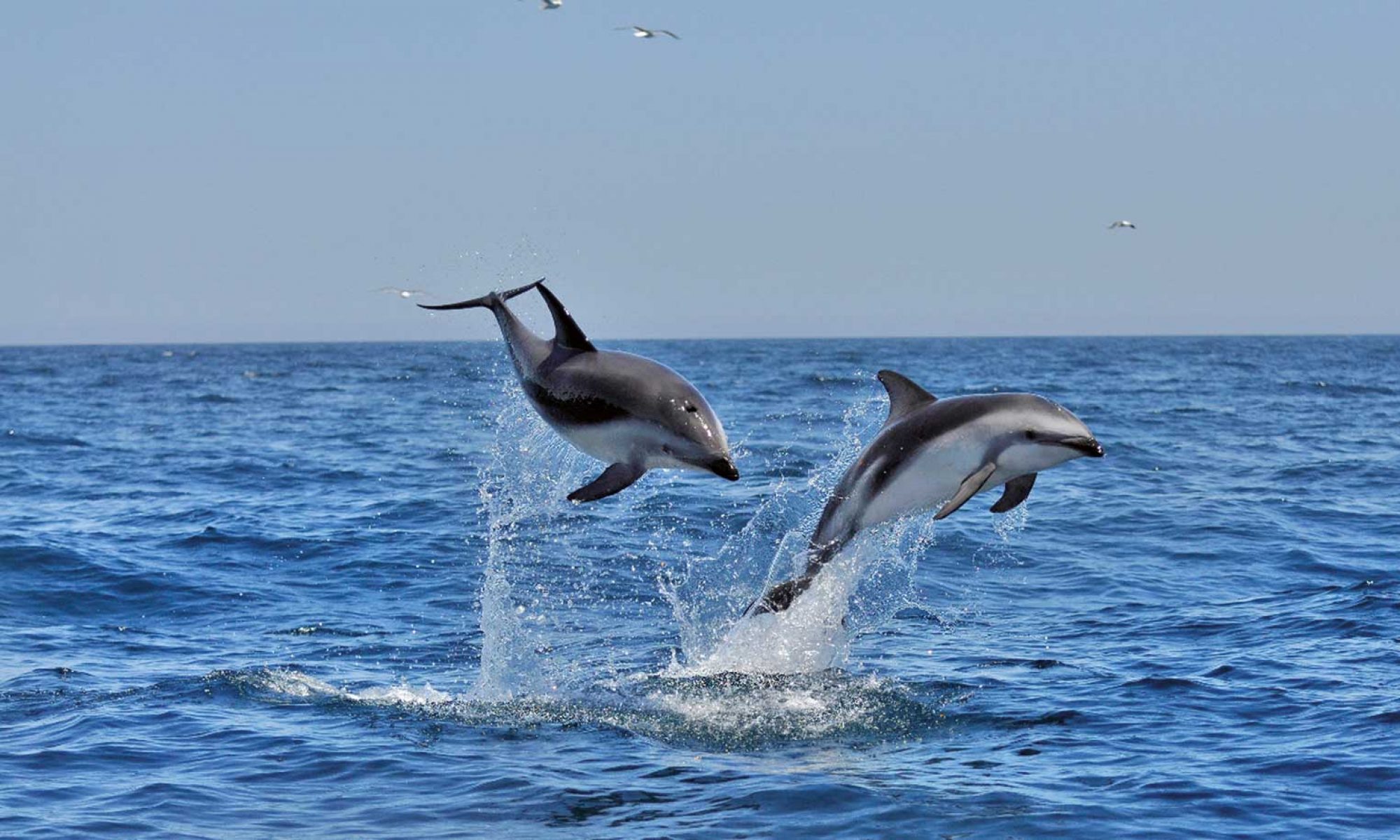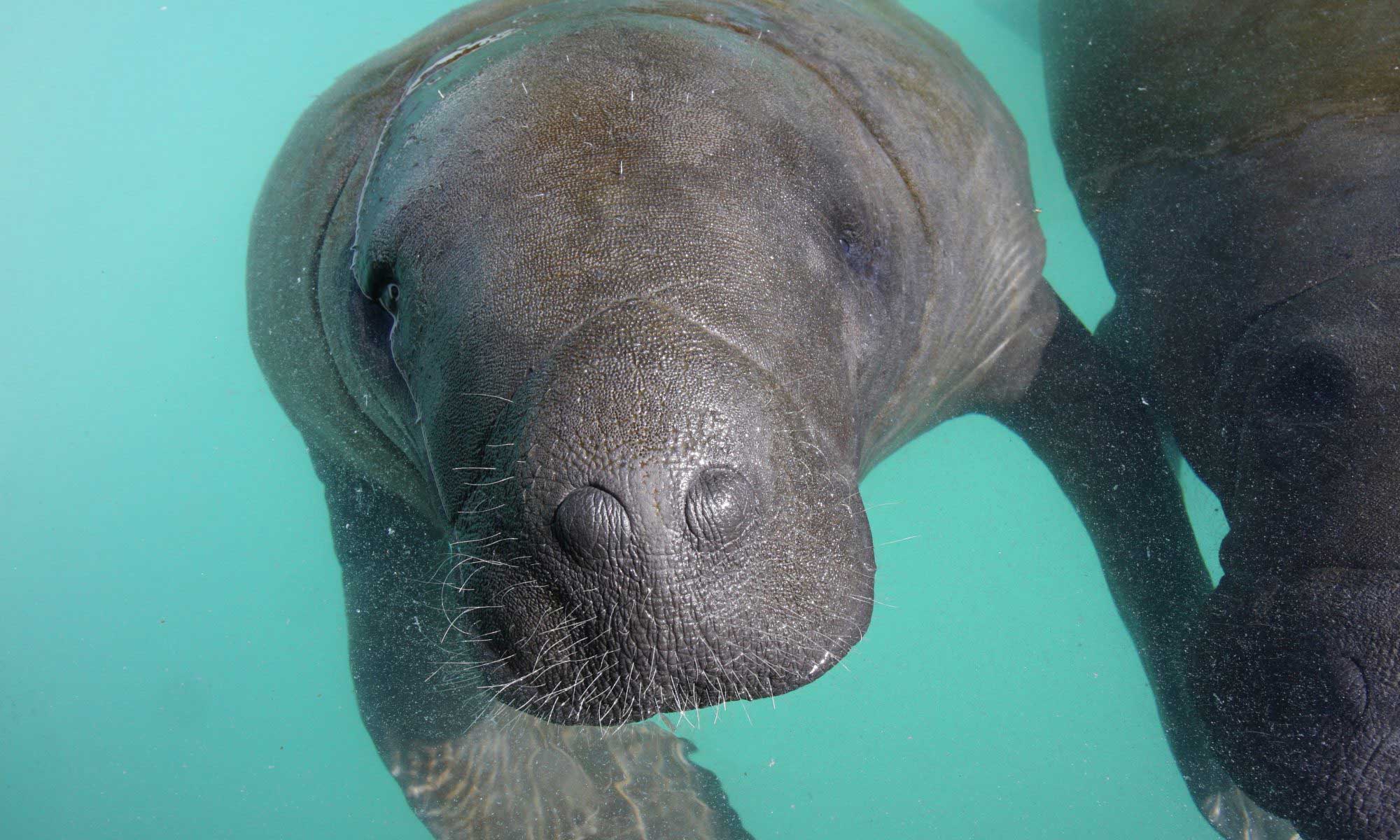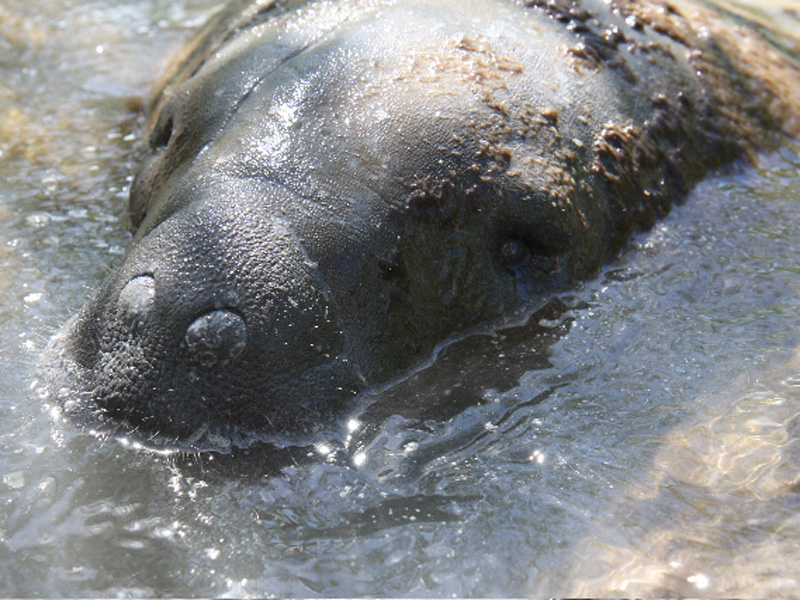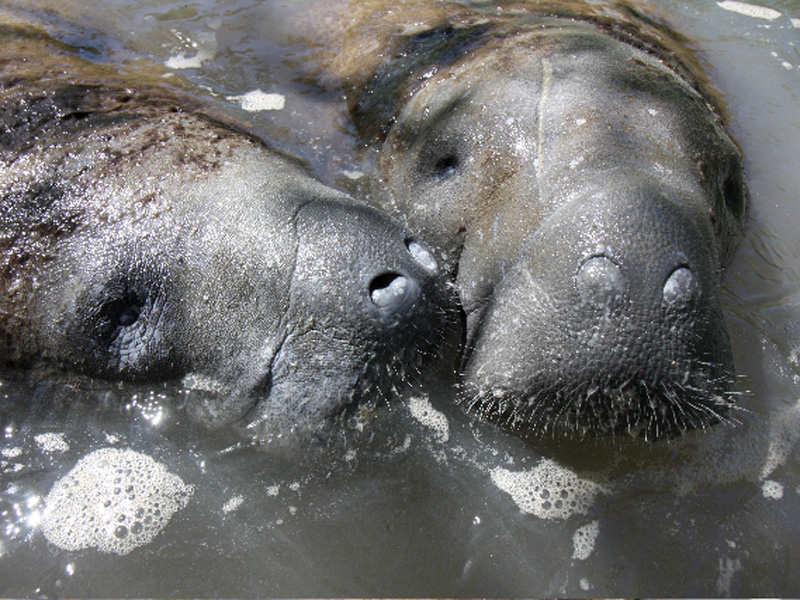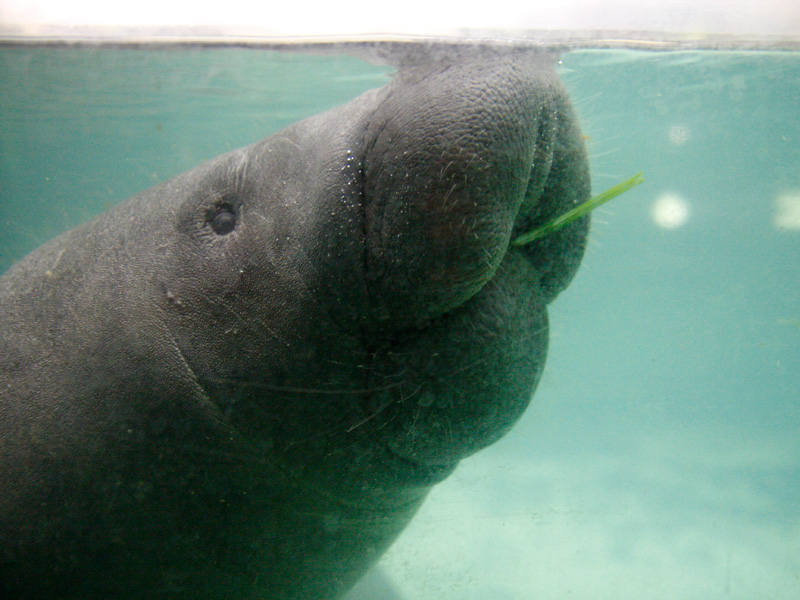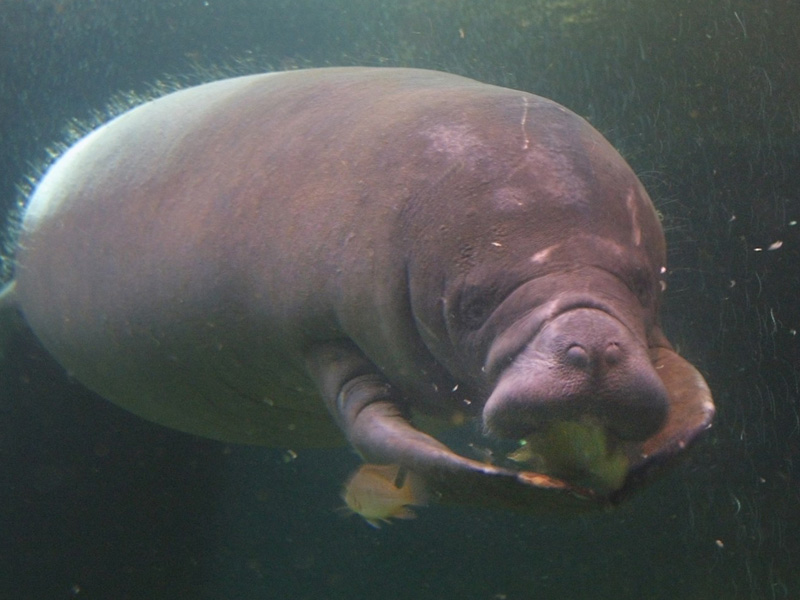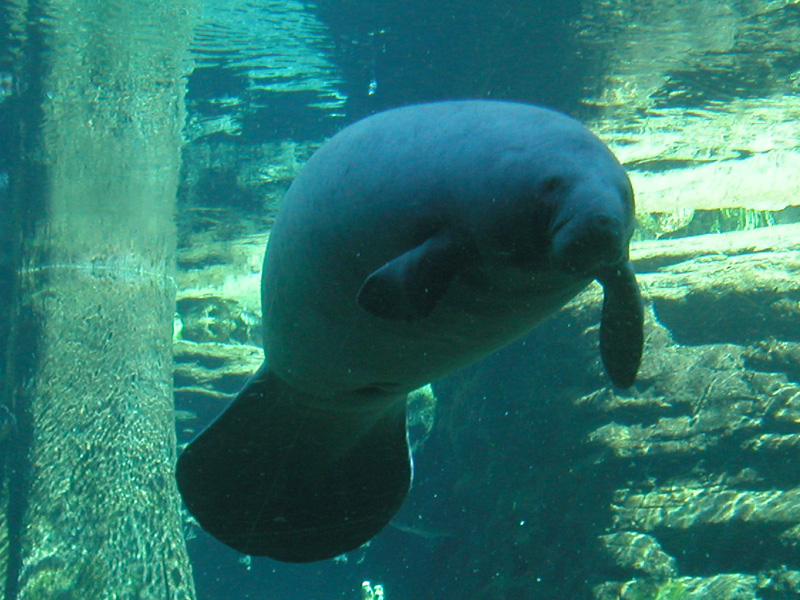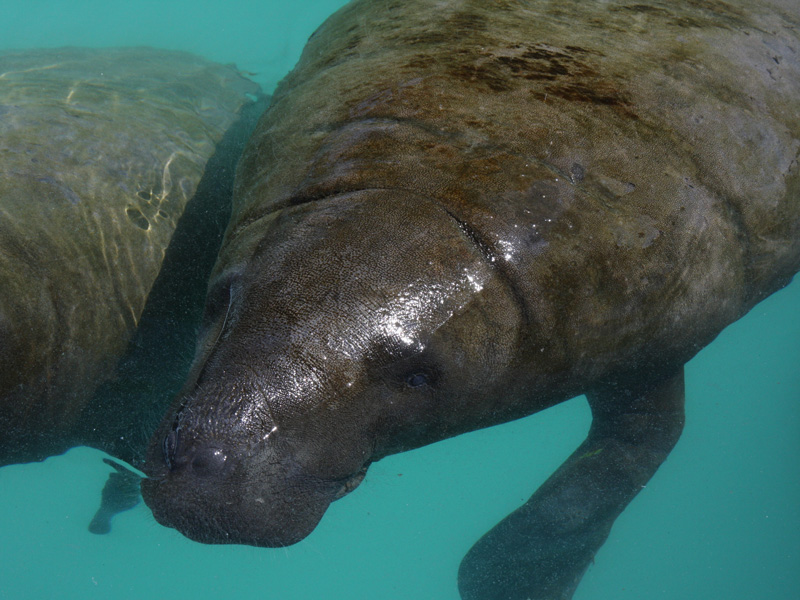Amazon Manatee – Manatee | Manatees or manatees seem to have sprung from the fantasies of the earlier sailors and are considered the origin of mermaids.
The Amazon manatee (Trichechus inunguis) or manatee is the smallest of the manatee species and the only one that is exclusively at home in freshwater. The body is barrel-shaped and colored in different shades of gray. The belly of the Amazon manatee has white spots. The caudal fin is round, the front fins are more elongated than in the other manatee species and nails are missing. The whole body is covered with fine hairs, around the mouth are thicker whiskers.
The distribution area extends to the Amazon and Orinoco river systems. The animals prefer to stay in blackwater lakes and lagoons. Amazon manatees are often found in small groups of 4 – 8 animals. However, if the rivers carry less water during the dry season, large groups of manatees can accumulate in the deeper lakes and river areas.
Manatees are pure herbivores, they graze for up to 8 hours a day and can eat up to 15 percent of their own body weight on aquatic plants.
After a gestation period of 12 – 14 months, 1 cub is born. As with all manatee species and also with the closest relatives, the elephants, the teats are located between the forelimbs.
Dangers
The greatest dangers for Amazonian manatees lie in industrialization, extraction of raw materials and the associated changes in their habitats, as well as the progressive pollution of the waters. The increasing shipping traffic also increases the risk of collision with watercraft.
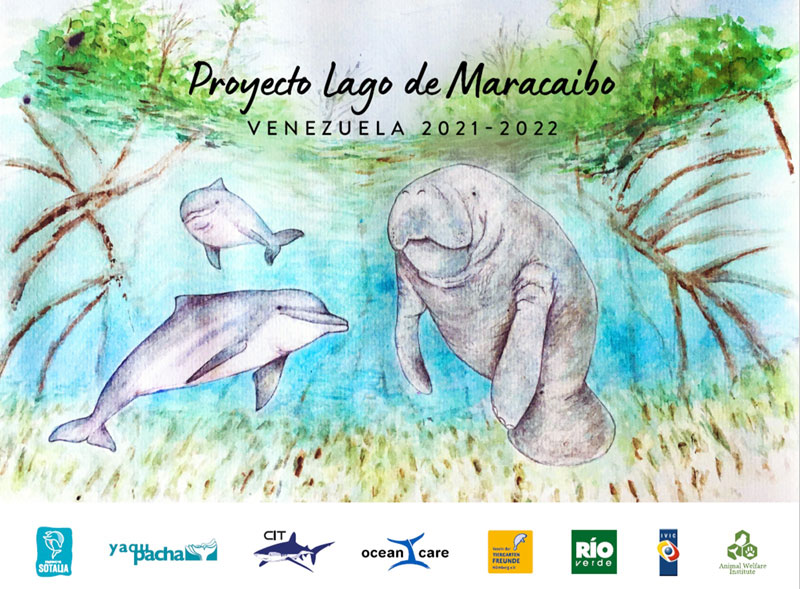
YAQU PACHA is currently carrying out a species conservation project for the manatees in Venezuela in cooperation with PROYECTO SOTALIA .
Project Manatee | Amazon Dolphin | Videos | 30 years of YAQU PACHA e.V. | Summary of a successful workshop | Project Amazon Dolphin | Species conservation
